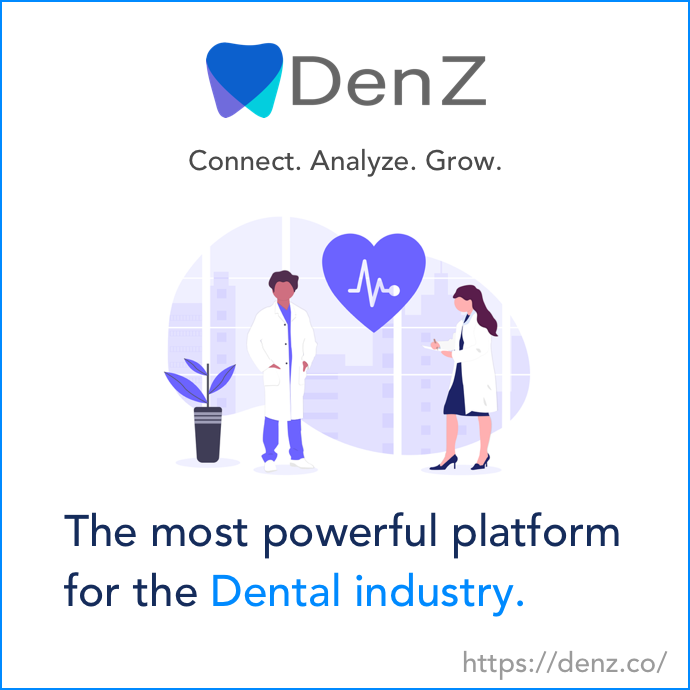Jim Szyperski is the CEO of Acuity Behavioral Health, a company redefining inpatient psychiatric care through data-driven innovation. Acuity has pioneered a new category—Behavioral Health Operations Intelligence—developed in collaboration with leading health systems. Its Behavioral Health Acuity Index (BHAI) and Acuity Insights platform leverage AI and real-time EHR integration to help providers deliver more consistent, efficient, and effective care. The platform enables hospitals to enhance patient outcomes, optimize staffing, and maintain financial sustainability.
Can you break down the recent federal and state-level funding cuts? How are they impacting community clinics and inpatient psychiatric units?
Without question, significant funding is being cut from behavioral healthcare programs that are already understaffed and underfunded nationally. What we’re seeing is simply a shifting of problems to the states without any clear resolution. The impact is falling directly on already overwhelmed emergency services, emergency departments, and local hospitals as people have nowhere else to turn for treatment.
The recent HHS staffing reductions are especially concerning, as they affect critical agencies like SAMHSA, CDC, and NIH that support mental health and substance use programs. These cuts mean losing staff with years of expertise, jeopardizing recent progress like reducing overdose deaths. When you combine federal cuts with state-level reductions, you’re creating a perfect storm where the most vulnerable populations lose access to essential care at a time when we’re still facing ongoing mental health, overdose, and suicide crises nationwide.
Why has inpatient psychiatric care remained one of the most “opaque and under-optimized” areas of medicine for so long?
Inpatient psychiatric care has lagged behind its medical-surgical peers for decades for multiple reasons. First, we’ve relied heavily on subjective assessments that vary from location to location. The high degree of variation and lack of quantitative, accepted models has stifled the aggregation of usable data from which best practices can evolve. So, unlike other medical specialties with clear diagnostic criteria and treatment protocols, inpatient psychiatry remains “stuck” without an effective model with which to quantify patient acuity and progress.
Additionally, inpatient psychiatry is the lowest rung on the reimbursement ladder. Current reimbursement models are based on a per diem only scheme that undervalues psychiatric care and disincentivizes investments to increase staffing or implement new technology. As it stands, inpatient psychiatric facilities generally cover only about 65% of the hospital’s cost to deliver services. Consequently, hospitals are constantly operating inpatient units under extreme financial pressure, and at a point in time when they are overwhelmed with patients, understaffed, and badly underfunded. This environment is not sustainable. Unfortunately, the absence of a baseline, a model to measure and quantify incremental expenses against, ensures there is a low probability this will change.
Finally, the persistent stigma around mental health has limited investment and attention compared to other medical fields. Though the pandemic elevated mental health into a wide conversational topic, the simple fact is that these considerable conversations have largely remained just that, conversations, with little to no systemic change in the care and treatment of mental illness. The combination of these factors has left inpatient psychiatric care, and the highly dedicated nurses and staff treating these patients, “stuck” with outdated methodologies and limited data to drive improvements. This is precisely the gap we’re addressing at Acuity.
You’ve introduced a new category called Behavioral Health Operations Intelligence (BHOI). What exactly does this mean, and how is it different from traditional health analytics?
Behavioral Health Operations Intelligence (BHOI) is an entirely new approach to managing inpatient psychiatric care. The BHOI is a complete rewrite of traditional behavioral health methods that are retrospective, fragmented, and often derived from medical-surgical census models that were not designed for more volatile inpatient psychiatric environments.
In stark contrast to census models, the BHOI provides an AI-powered framework for standardizing, measuring, and optimizing care delivery. It is a clinical operations system specifically developed for inpatient psychiatry and behavioral healthcare in general. The BHOI provides clinical assessment data in the form of comprehensive patient and unit acuity scores to nurse managers and administrators to accurately inform and make suggestions for operational decisions about staffing, resource allocation, and treatment planning. The BHOI provides actionable data to improve the care and safety of patients and staff, increase operational efficiency, and establish a model for higher reimbursements.
In short, the BHOI establishes a common language and measurement system across the entire behavioral health ecosystem. This standardization allows behavioral healthcare to benchmark performance, identify best practices, and continuously improve in ways that simply weren’t possible before.
How does the BHOI work—and what role does AI play in it?
The BHOI platform is composed of two primary elements:
- The Behavioral Health Acuity Index (BHAI), a validated, comprehensive measurement and scoring of patient acuity on a 1-100 scale., and
- Acuity INSIGHT, our AI models that aggregate and analyze the acuity scores in conjunction with a series of relevant data streams captured within the Electronic Health Record system of record. Examples of this are specific nurse and staffing data streams, medical orders, comorbidities, medication management, etc.
It is important to note that both the BHAI and INSIGHT were created intentionally in full collaboration with some of our nation’s leading health systems, including Yale New Haven Health, to ensure the BHOI is clinically accurate, relevant, and trusted by the professionals who use it daily.
Can you walk us through how your platform integrates into EHR systems like Epic? What’s the impact on clinical decision-making?
Integration with EHR systems like Epic is a light integration, built quickly and seamlessly into nursing staff’s clinical workflow. Specific quantitative data is accessed by flowsheets directly from the patient record and is combined with two short qualitative nurse inputs at shift change. This data is sent directly from the EHR to our cloud platform and returned within a second back to the EHR for display to nurse managers and hospital administrators, providing them an accurate and transparent baseline for evaluating patient status.
EHR integration also enables more informed treatment planning. With accurate acuity measurement, nurses managers can better match care team interventions to patient needs and track whether those interventions are working as expected, dramatically improving resource allocation. Nurse managers assign staff based on actual patient acuity rather than arbitrary patient-to-staff ratios, ensuring that the most acute patients receive appropriate attention while avoiding unnecessary staffing for lower-acuity patients. Early adopters like Pine Rest Christian Mental Health Services, Cone Health, and Tanner Health are already seeing these benefits in their daily operations.
How does your AI-powered Acuity Insights platform forecast staffing needs and help prevent burnout?
Our Acuity Insights platform addresses one of the most persistent challenges in behavioral health—matching staffing levels to actual patient needs. The platform analyzes historical patterns, current acuity data, and external factors to predict staffing requirements with remarkable accuracy. Ultimately, when staff are consistently overworked due to miscalculated patient needs, or nurse shortages result in double shifts, burnout is inevitable. Our platform helps nurse managers and administrators project the right allocation of staff for each shift based on predicted acuity levels, not just census counts.
Beyond just numbers, the nurse’s real time inputs during shift changes are a key element in the platform’s calculation of patient acuity scores. In addition, the BHOI analyzes which specific nursing skills and specialties will be needed, allowing for more strategic staff deployment by nurse managers, even alerting managers to potential stress points or units at high risk for staff fatigue based on sustained high acuity.
The result is more balanced workloads, reduced overtime, appropriate staffing levels, an empowered nursing staff, and a more sustainable work environment for these dedicated healthcare professionals.
What are the most powerful predictive capabilities currently baked into Acuity’s system?
To date, the most impactful predictive capability of the BHOI is through INSIGHT, which, to steal a phrase from our Harry Potter loving team, is internally dubbed “Sorting Hat”. Sorting Hat uses our AI to analyze our expansive data sets and accurately predict (90%+) the level of intervention by nursing staff that each patient will need the following day. Additionally, Sorting Hat is able to match nurse workload by volume of patients, by patient acuity points and by nurse skill sets to suggest to nurse managers more balanced and equitable shift assignments to reduce risk of burnout and staff attrition.
Do you think AI can fully replace subjective assessments in psychiatry—or will it always remain a tool for augmentation?
The BHOI is a clinical operations system for inpatient psychiatry, which by definition implies patients suffering from Severe Mental Illness (SMI). Inpatient care is psychiatry’s ICU, and in this frequently volatile environment, for the safety of both patients and staff, I believe AI is an augmentation tool to inform, even suggest options and scenarios to nurse managers and inpatient leadership. The human connection between nurses and patients remains fundamental to effective inpatient treatment, and in my view, AI cannot replicate the nuanced understanding that comes from that relationship.
What AI does exceptionally well is provide objective, consistent measurement to inform and enhance subjective assessments. It provides a common language for care teams and identifies patterns that are not obvious or apparent in human observation. In identifying the patterns, AI can then proffer future scenarios that will inform clinical decisions on patient need, appropriate nursing staff assignments, more efficient bed utilization, etc. This provides enormous efficiency, and ergo financial benefit, to hospital inpatient operations throughout the patient stay lifecycle, from admissions through length of stay to discharge.
What challenges do you anticipate as you expand this platform nationally—regulatory, ethical, or technological?
Our platform was created from the ground up by clinical experts from some of our country’s leading behavioral healthcare institutions as a new category and patient classification system for behavioral healthcare to fill the clinical gap in patient care. In doing so, full attention was paid to HIPAA and the regulatory challenges with privacy and compliance as foundational principles, not afterthoughts. By design, the BHOI does not retain personal information (PHI) but rather only deidentified data and follows all security protocols.
We are in continuous dialogue with our customers and nurse users, and investing heavily in incorporating their feedback and ideas into our product roadmap for the BHOI. From a technical perspective, the platform is adaptable to and interoperable with all major EHRs, and our implementation teams work side-by-side with clinical specialists in the real-world environment of inpatient psychiatry.
Perhaps the most significant challenge with industry category creation is change management, particularly in the layered and complex world of healthcare. Creating the awareness of any new technology and helping healthcare leaders understand their ROI on the new investment, and how the BHOI will positively impact nursing staff or departmental KPIs, takes time and is thoughtfully and transparently approached. We have found that hospitals are embracing the BHOI as a data-driven approach in a field heavily reliant on subjective assessments. The collaborative development model we have chosen to follow with our health system partners is the crucial underpinning of the foundation of a BHOI platform that clinicians actually want to use rather than feel subjected to.
What does the future of inpatient psychiatric care look like if platforms like Acuity’s become the norm?
First and foremost, mental healthcare IS healthcare, period. This is a fact that everyone who has had a family member or friend suffering from mental illness fully understands. Our mental health and physical health are inextricably intertwined. Unfortunately, our healthcare system was not developed with that premise in mind, and only in recent years, largely spurred by the pandemic, has the dialogue around mental health become a regular topic of conversation in healthcare.
But conversation and action are miles apart in behavioral healthcare, and recognition, while necessary, is not a remedy. Physical healthcare has benefitted from decades of data collection, analyses, and modeling. The amazing progress in cardiology, nephrology, oncology, etc. has been driven by best practices that have evolved through research and refinement over time. That has not occurred in behavioral healthcare which has lived a closeted existence.
The term parity is used a lot by behavioral healthcare providers in the context of comparisons with general healthcare. But parity implicitly requires a level financial playing field and that will never be achieved until behavioral healthcare tracks more closely with the rest of healthcare: data-informed, standardized, and optimized as other medical specialties are. The BHOI is the first step in creating a clear pathway towards parity. It is the first validated and quantifiable model for use in inpatient psychiatry that can help level the playing field, and provide actionable data and insights that hospitals can leverage for efficiency, retention of staff, and, yes, financial justification and appropriate reimbursement.
It is essential that psychiatric units move as quickly as possible towards sustainability rather than continuing on as significant cost centers for hospitals. The current state continues a downward path and is simply not sustainable. Better resource allocation, optimized lengths of stay, and improved patient outcomes are essential contributors, but they require quantitative measurements and results, data-driven models, to build a healthier financial picture for behavioral healthcare. And time is not our friend, “so let us not talk falsely now, the hour is getting late”.
Thank you for the great interview, readers who wish to learn more should visit Acuity Behavioral Health.
Credit: Source link







































